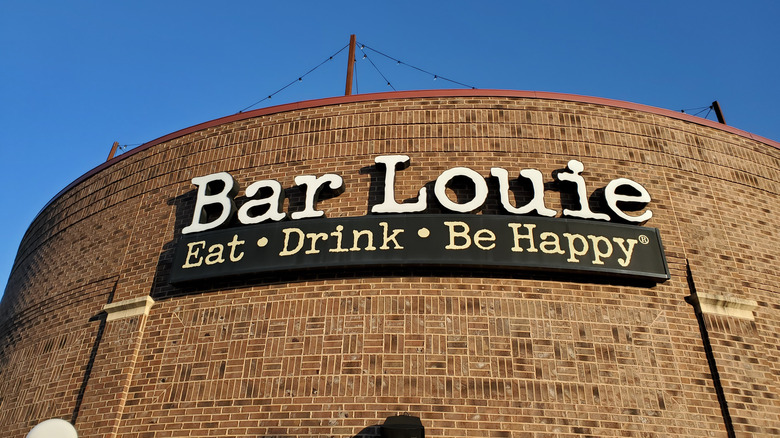A Beloved Bar Chain Just Filed For Bankruptcy And The Reason Couldn't Be Clearer
In March 2025, Bar Louie, a gastrobar — restaurant and bar — chain, filed for Chapter 11 bankruptcy protection for the second time. The company is battling with liabilities ranging from $50 million to $100 million, according to a press release, while its assets are valued at just $1 million to $10 million. The reasons stem from a mixed bag of troubles, including locations that aren't pulling their weight, climbing costs to keep the business running, and the squeeze from a tough economy. As a result, Bar Louie is planning to shut down at least 13 of its corporate-owned spots scattered across Michigan, Tennessee, Illinois, Texas, Colorado, New Jersey, Missouri, and Ohio as it tries to tighten up its operations.
This is the company's second bankruptcy in five years. Back in January 2020, the chain had to close 38 out of its 134 pubs because of underperformance, shortly before the pandemic. When COVID-19 arrived, it worsened the situation as it did for the entire restaurant industry. By the end of 2023, things looked pretty grim with the company reporting a net loss of $14.6 million — almost triple the loss from the previous year, which was $5.3 million. It also saw its yearly revenue drop by around $1.9 million. Simple put, Bar Louie is still struggling to find stable ground. And it's not limited to the brand or restaurant industry, as many fashion retail chains are experiencing a similar fate.
Key reasons behind Bar Louie's bankruptcy
The financial troubles of Bar Louie go back to its 2020 bankruptcy, which was already a big red flag with its massive debts of $110 million. The pandemic forced many restaurant chains to grapple with long-term closures, a drop in customer visits, and the steep costs of meeting new health and safety standards. In 2024, TGI Fridays filed for bankruptcy, citing the COVID-19 pandemic as a "primary driver" — but Bar Louie felt the impact acutely, with a sharp fall in sales and a dramatic decrease in the number of its locations — from 134 at its peak in 2019 to just 66 by 2023. To save the situation, Antares Capital stepped in, wiping off $82.5 million in secured debt to take over most of its assets. Still, Bar Louie's financial foundation stayed shaky.
Bar Louie's bounce back after its first bankruptcy in 2020 wasn't as successful as hoped. Even though the chain managed to reorganize its debt through deals with creditors, these efforts weren't enough to completely secure its financial footing amid ongoing economic pressures. This struggle was clear during its second bankruptcy filing, with the company reporting debts of $50 million to $100 million, while its assets were a mere $1 million to $10 million. Efforts to breathe new life into the business by shutting down unprofitable locations and renegotiating leases also fell short, failing to bring about the turnaround needed, and thus deepening the financial strain.
What's next for Bar Louie?
Bankruptcy isn't the end of a business. Many companies come roaring back from bankruptcy. Bar Louie plans to secure debtor-in-possession (DIP) financing, which will keep the business running during the bankruptcy process. It consists of $1.35 million along with a $1.125 million to offset existing debt. This financing includes a 12.5% interest rate but will make sure new debts are paid off first. Simply put, Bar Louie plans to sell its business assets to keep its 31 corporate-owned locations going while it finds a path to recovery.
This is crucial because although the bankruptcy filing brought to light considerable debts, it also included over $1.8 million owed to US Foods Dallas and more than $590,000 to supplier Edward Don. The plan here is pretty straightforward; it wants to get its finances back on track quickly and have set clear deadlines. Within 28 days, Bar Louie would have its recovery plan and related documents ready, get the court's go-ahead within 90 days, and hope to be fully back on track within 120 days. From the looks of it, Bar Louie is aggressively pushing to turn things around and get back to business.


